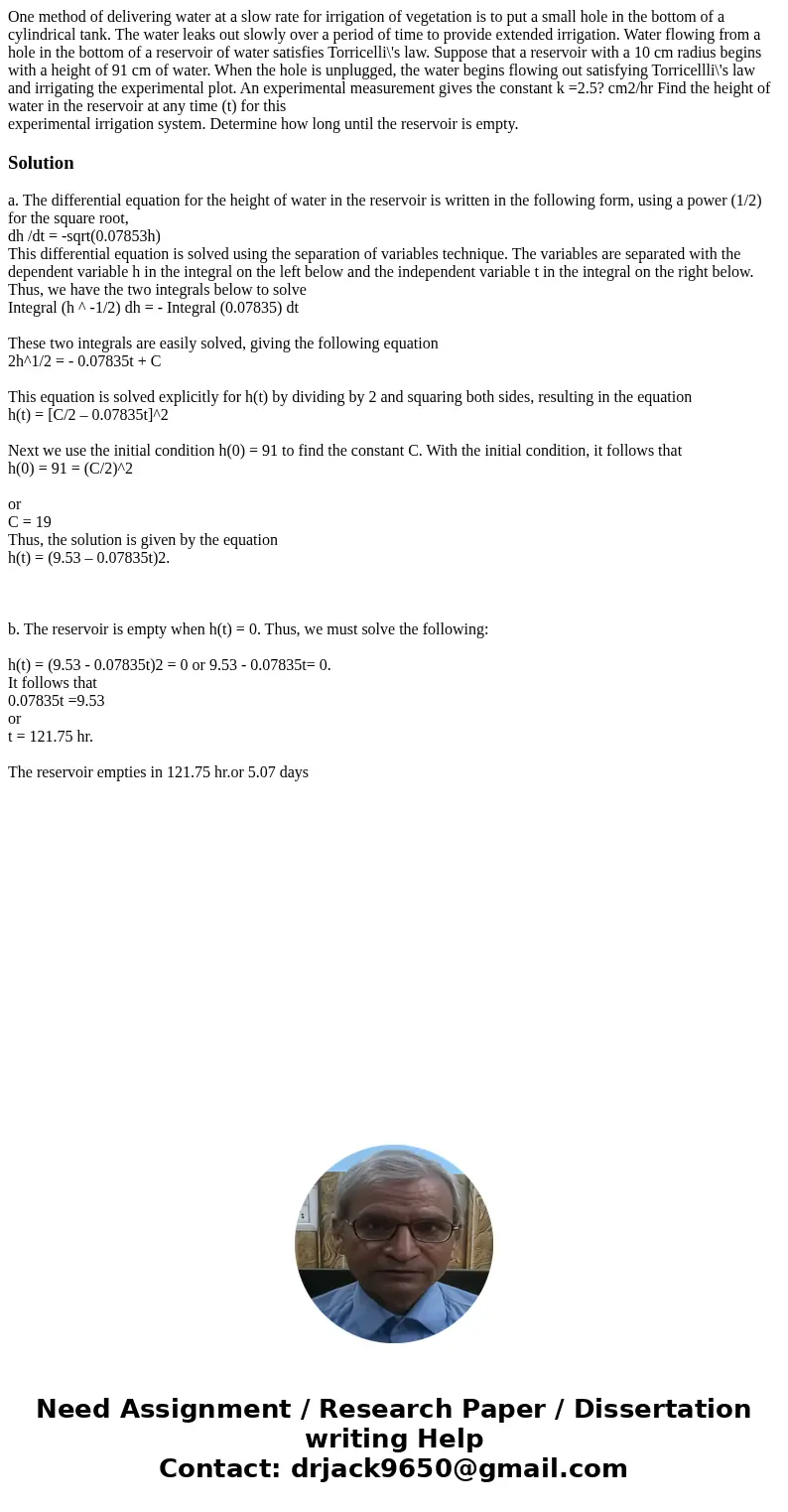One method of delivering water at a slow rate for irrigation
experimental irrigation system. Determine how long until the reservoir is empty.
Solution
a. The differential equation for the height of water in the reservoir is written in the following form, using a power (1/2) for the square root,
dh /dt = -sqrt(0.07853h)
This differential equation is solved using the separation of variables technique. The variables are separated with the dependent variable h in the integral on the left below and the independent variable t in the integral on the right below. Thus, we have the two integrals below to solve
Integral (h ^ -1/2) dh = - Integral (0.07835) dt
These two integrals are easily solved, giving the following equation
2h^1/2 = - 0.07835t + C
This equation is solved explicitly for h(t) by dividing by 2 and squaring both sides, resulting in the equation
h(t) = [C/2 – 0.07835t]^2
Next we use the initial condition h(0) = 91 to find the constant C. With the initial condition, it follows that
h(0) = 91 = (C/2)^2
or
C = 19
Thus, the solution is given by the equation
h(t) = (9.53 – 0.07835t)2.
b. The reservoir is empty when h(t) = 0. Thus, we must solve the following:
h(t) = (9.53 - 0.07835t)2 = 0 or 9.53 - 0.07835t= 0.
It follows that
0.07835t =9.53
or
t = 121.75 hr.
The reservoir empties in 121.75 hr.or 5.07 days

 Homework Sourse
Homework Sourse